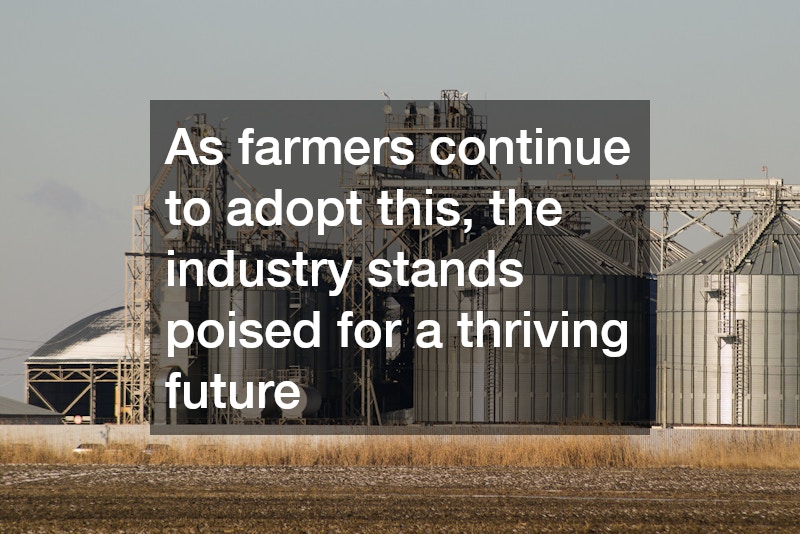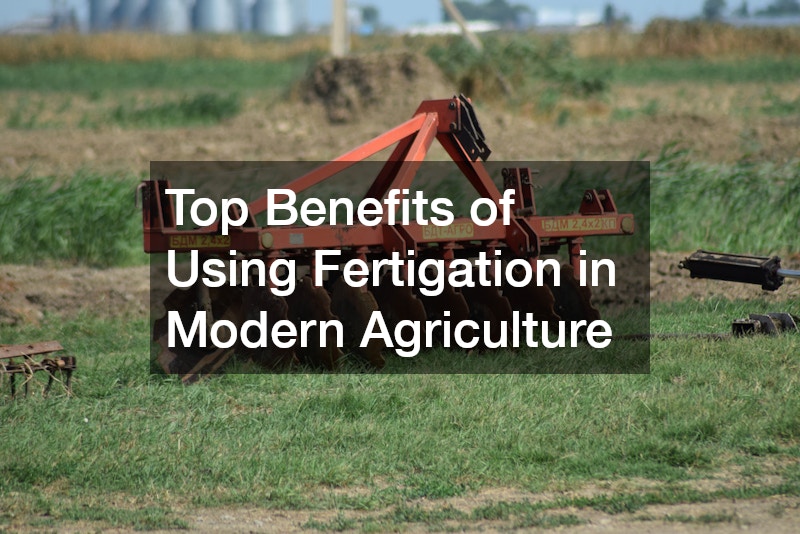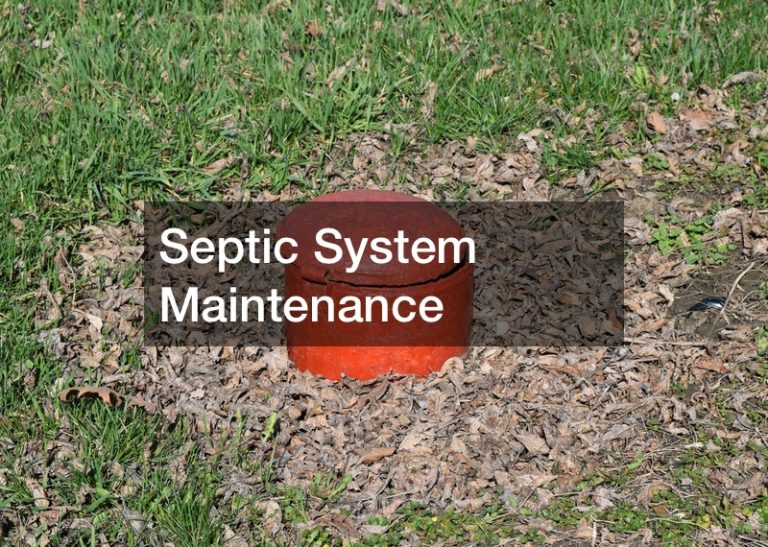Top Benefits of Using Fertigation in Modern Agriculture

In recent decades, the agriculture industry has witnessed remarkable advancements, one of which is fertigation. As modern practices evolve, this stands out as a pivotal technique that integrates fertilization with irrigation. The method significantly optimizes resource use, enhances crop yields, and contributes to sustainable farming practices.
This involves the delivery of nutrients through irrigation systems directly to the plant roots. This tailored approach allows for precise nutrient management, reducing waste and improving efficiency. Farmers worldwide are increasingly adopting this to boost productivity and ensure food security.
The benefits are multifaceted, affecting crop quality, environmental sustainability, and economic outcomes. By integrating this practice into modern agriculture, farms can respond dynamically to the nutritional needs of their crops. This article delves into the top benefits in modern agriculture, illustrating how it is reshaping the future of farming.
Optimized Resource Utilization
One of the primary benefits is its ability to optimize resource utilization. By supplying nutrients directly to the root zone, plants absorb them more readily, minimizing nutrient wastage. This is particularly beneficial in areas with limited water and nutrient resources, where every drop and granule counts.
The precision of this process reduces the need for excess fertilization, leading to significant cost savings for farmers. Moreover, since nutrients are provided in a dissolved form, they distribute uniformly, ensuring that each plant receives an equal amount. This uniformity is crucial for maximizing row crop yields in large agricultural operations.
Additionally, systems can be automated, enabling real-time adjustments based on environmental conditions and crop stages. This adaptability ensures that plants receive the necessary nutrients at the optimal time, promoting healthy growth and reducing resource footprints. Consequently, fertigation supports sustainable agriculture by aligning resource use with crop demand.
Improved Crop Yield and Quality
Fertigation has a profound impact on enhancing crop yield and quality. By providing a stable and consistent flow of nutrients, plants achieve optimal growth conditions. This method ensures that nutritional deficiencies are promptly addressed, leading to robust plant health.
Consistently high nutrient availability translates into improved crop resilience against pests and diseases. The well-nourished plants are better equipped to fend off biotic stresses, reducing the need for chemical interventions. This aspect not only minimizes production costs but also results in healthier food products.
The superior crop quality achieved through this enhances marketability and consumer appeal. Uniform growth leads to an attractive harvest, meeting market standards and expectations. Consequently, farmers experience increased profits due to the sale of premium-quality produce, demonstrating its role in economic sustainability.
Environmental Sustainability
Environmental sustainability is a crucial aspect of modern agriculture, and this process contributes significantly to it. Traditional fertilization methods often result in runoff and leaching, which can contaminate water sources and ecosystems. It minimizes these environmental concerns by targeting nutrient application precisely where needed.
By reducing the risk of nutrient runoff into local waterways, fertigation aligns with ecological preservation goals. The controlled application of fertilizers also lessens the greenhouse gas emissions associated with manufacturing and distributing excess fertilizers. This reduction in environmental impact helps farms comply with environmental regulations and initiatives.
It supports the adoption of integrated pest management by fostering healthier plants that are less reliant on pesticides. The synergy between decreased chemical use and precision nutrient management underscores fertigation’s role in promoting a greener future. Through sustainable practices, agriculture can progress toward global environmental stewardship goals.
Economic Benefits
Economically, it offers considerable advantages to modern agriculture. The method’s efficiency reduces inputs, lowering the cost per unit of agricultural production. Farmers can achieve higher profitability by optimizing their investment in fertilizers and reducing operational expenses.
Additionally, the increased productivity and quality of crops through fertigation open new market opportunities. Farmers benefit from selling their produce at premium prices and accessing markets that emphasize quality and sustainability. This diversification of market potential enhances the economic resilience of agricultural enterprises.
Adoption can also lead to enhanced financial stability for farms by mitigating risks associated with crop failures. By ensuring consistent production and reducing vulnerability to environmental stresses, farmers can better manage their financial planning and investment strategies. Hence, it plays a pivotal role in securing a sustainable economic future for the agricultural sector.
Fertigation is transforming modern agriculture through its many benefits, including optimized resource utilization, improved crop yield and quality, environmental sustainability, and economic advantages. This technique exemplifies how technological innovations can enhance agricultural productivity while preserving natural resources. As the global population continues to grow, the importance of precise and efficient farming practices like fertigation becomes increasingly paramount.
Implementing fertigation allows farmers to balance the demands of increasing food production with environmental and economic considerations. By embracing such methods, the agricultural sector can contribute to global food security while reducing ecological footprints. It denotes a shift towards smarter, more sustainable farming, ensuring that agricultural systems remain resilient and prosperous for future generations.
As farmers and agricultural stakeholders continue to adopt this, the industry stands poised for a thriving future. The benefits outlined highlight how it’s becoming indispensable in achieving global agricultural goals. Ultimately, its adoption not only sustains but enhances the viability of modern agriculture, proving that innovation is key to addressing contemporary challenges.
In recent decades, the agriculture industry has witnessed remarkable advancements, one of which is fertigation. As modern practices evolve, this stands out as a pivotal technique that integrates fertilization with irrigation. The method significantly optimizes resource use, enhances crop yields, and contributes to sustainable farming practices.
This involves the delivery of nutrients through irrigation systems directly to the plant roots. This tailored approach allows for precise nutrient management, reducing waste and improving efficiency. Farmers worldwide are increasingly adopting this to boost productivity and ensure food security.
The benefits are multifaceted, affecting crop quality, environmental sustainability, and economic outcomes. By integrating this practice into modern agriculture, farms can respond dynamically to the nutritional needs of their crops. This article delves into the top benefits in modern agriculture, illustrating how it is reshaping the future of farming.
Optimized Resource Utilization
One of the primary benefits is its ability to optimize resource utilization. By supplying nutrients directly to the root zone, plants absorb them more readily, minimizing nutrient wastage. This is particularly beneficial in areas with limited water and nutrient resources, where every drop and granule counts.
The precision of this process reduces the need for excess fertilization, leading to significant cost savings for farmers. Moreover, since nutrients are provided in a dissolved form, they distribute uniformly, ensuring that each plant receives an equal amount. This uniformity is crucial for maximizing row crop yields in large agricultural operations.
Additionally, systems can be automated, enabling real-time adjustments based on environmental conditions and crop stages. This adaptability ensures that plants receive the necessary nutrients at the optimal time, promoting healthy growth and reducing resource footprints. Consequently, fertigation supports sustainable agriculture by aligning resource use with crop demand.
Improved Crop Yield and Quality
Fertigation has a profound impact on enhancing crop yield and quality. By providing a stable and consistent flow of nutrients, plants achieve optimal growth conditions. This method ensures that nutritional deficiencies are promptly addressed, leading to robust plant health.
Consistently high nutrient availability translates into improved crop resilience against pests and diseases. The well-nourished plants are better equipped to fend off biotic stresses, reducing the need for chemical interventions. This aspect not only minimizes production costs but also results in healthier food products.
The superior crop quality achieved through this enhances marketability and consumer appeal. Uniform growth leads to an attractive harvest, meeting market standards and expectations. Consequently, farmers experience increased profits due to the sale of premium-quality produce, demonstrating its role in economic sustainability.
Environmental Sustainability
Environmental sustainability is a crucial aspect of modern agriculture, and this process contributes significantly to it. Traditional fertilization methods often result in runoff and leaching, which can contaminate water sources and ecosystems. It minimizes these environmental concerns by targeting nutrient application precisely where needed.
By reducing the risk of nutrient runoff into local waterways, fertigation aligns with ecological preservation goals. The controlled application of fertilizers also lessens the greenhouse gas emissions associated with manufacturing and distributing excess fertilizers. This reduction in environmental impact helps farms comply with environmental regulations and initiatives.
It supports the adoption of integrated pest management by fostering healthier plants that are less reliant on pesticides. The synergy between decreased chemical use and precision nutrient management underscores fertigation’s role in promoting a greener future. Through sustainable practices, agriculture can progress toward global environmental stewardship goals.
Economic Benefits
Economically, it offers considerable advantages to modern agriculture. The method’s efficiency reduces inputs, lowering the cost per unit of agricultural production. Farmers can achieve higher profitability by optimizing their investment in fertilizers and reducing operational expenses.
Additionally, the increased productivity and quality of crops through fertigation open new market opportunities. Farmers benefit from selling their produce at premium prices and accessing markets that emphasize quality and sustainability. This diversification of market potential enhances the economic resilience of agricultural enterprises.
Adoption can also lead to enhanced financial stability for farms by mitigating risks associated with crop failures. By ensuring consistent production and reducing vulnerability to environmental stresses, farmers can better manage their financial planning and investment strategies. Hence, it plays a pivotal role in securing a sustainable economic future for the agricultural sector.
Fertigation is transforming modern agriculture through its many benefits, including optimized resource utilization, improved crop yield and quality, environmental sustainability, and economic advantages. This technique exemplifies how technological innovations can enhance agricultural productivity while preserving natural resources. As the global population continues to grow, the importance of precise and efficient farming practices like fertigation becomes increasingly paramount.
Implementing fertigation allows farmers to balance the demands of increasing food production with environmental and economic considerations. By embracing such methods, the agricultural sector can contribute to global food security while reducing ecological footprints. It denotes a shift towards smarter, more sustainable farming, ensuring that agricultural systems remain resilient and prosperous for future generations.
As farmers and agricultural stakeholders continue to adopt this, the industry stands poised for a thriving future. The benefits outlined highlight how it’s becoming indispensable in achieving global agricultural goals. Ultimately, its adoption not only sustains but enhances the viability of modern agriculture, proving that innovation is key to addressing contemporary challenges.







